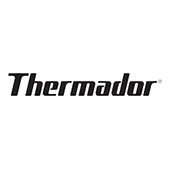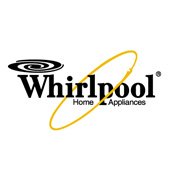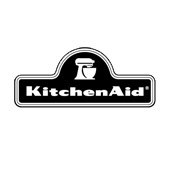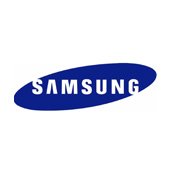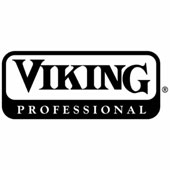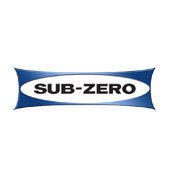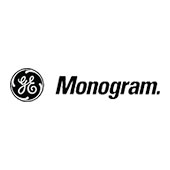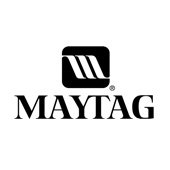Go Green
Environmental Concerns
What are the environmental concerns associated with the disposal of refrigerated household appliances?
Refrigerant: Household refrigerators and freezers manufactured before 1995 typically contain chlorofluorocarbon (CFC) refrigerant. Most window air-conditioning units and dehumidifiers contain hydrochlorofluorocarbon (HCFC) refrigerant. CFCs and HCFCs are ozone-depleting substances (ODS) that, if released to the environment, destroy the protective ozone layer above the earth. Moreover, CFC and HCFC refrigerants are also potent greenhouse gases, meaning that their release contributes to global climate change. Refrigerators and freezers manufactured since 1995 contain ozone-friendly hydrofluorocarbon (HFC) refrigerants; however, these refrigerants still need to be carefully handled since they are greenhouse gases.
Foam: Refrigerators and freezers manufactured before 2005 are insulated with foam that contains ODS—either CFCs or HCFCs. If emitted, CFCs and HCFCs contribute to both ozone depletion and climate change. Only units manufactured since 2005 contain foam blowing agents that are ozone and climate friendly. Air-conditioners and dehumidifiers do not contain foam.
What are the Dangers of Used Oil, Mercury, and PCBs?
- If improperly disposed, used oil from refrigerated appliances can result in the release of dissolved ODS refrigerant and groundwater contamination. In addition, short-term exposure to used oil can cause skin, eye, and respiratory irritation; in the long-term, it can cause cancer and damage to the liver, brain, immune system, and reproductive system.
- When released to the environment, mercury accumulates in the tissues of plants and animals and, when consumed by humans, impairs neurological development and causes other problems associated with the nervous system.
- PCBs are toxic substances with carcinogenic and non-cancerous effects on humans, including effects on the immune system, reproductive system, nervous system, and endocrine system.
Hazardous Components: Household appliances may also contain hazardous components, including used oil, polychlorinated biphenyls (PCBs), and mercury. For example, the cooling circuit contains oil that can be contaminated with ODS refrigerant. Some refrigerators and chest freezers manufactured prior to 2000 have mercury-containing components (i.e., switches and relays). Appliances manufactured prior to 1979 may contain PCB capacitors. For this reason, appliances should be recycled by facilities that safely remove these components prior to shredding and recycling. The Association of Home Appliance Manufacturers (AHAM) has more information on mercury and PCBs contained in home appliances.
II. Energy Consumption of Refrigerated Appliances
Would I save money by replacing my old refrigerator with a more energy efficient unit instead of waiting until the old unit fails?
What is a Bounty Program?
![]() A bounty program is an appliance turn-in program – typically sponsored by a local or regional utility. Through the program, an appliance owner is paid a "bounty" to allow the recycler to collect and recycle their old, inefficient appliance. Some programs also offer rebates and discounts towards the purchase of new ENERGY STAR® qualified models. Most bounty programs have specifications for the appliances they can accept. To find out if bounty programs are offered in your area, try contacting your electricity provider.
A bounty program is an appliance turn-in program – typically sponsored by a local or regional utility. Through the program, an appliance owner is paid a "bounty" to allow the recycler to collect and recycle their old, inefficient appliance. Some programs also offer rebates and discounts towards the purchase of new ENERGY STAR® qualified models. Most bounty programs have specifications for the appliances they can accept. To find out if bounty programs are offered in your area, try contacting your electricity provider.
A 20-year old refrigerator or freezer can consume two to four times more energy annually than a new model, and, as a result, can significantly increase your electric bill. Older refrigerators or freezers put a great strain on local power grids, especially during peak hours. By replacing your old refrigerator or freezer with a newer model, particularly one that has earned the government's ENERGY STAR® label, you can conserve energy and save upwards of $70/year! If your old refrigerator is a secondary unit located in a basement or garage, you can save approximately $120/year on electricity charges by removing it and not replacing it.
Getting rid of old refrigerators or freezers may be even more financially attractive if your local utility provider operates an appliance disposal program. Some utilities will actually pay you to get rid of your old refrigerator or freezer through bounty programs or rebate programs.
How do I know how much energy my refrigerator, freezer, or window air-conditioner uses?
Consult the energy guide in your owner's manual or visit HomeEnergy onlineand enter the required information. The Department of Energy also provides a formula for calculating energy usage for various appliances. Energy consumption is rated in kilowatt hours/year (kWh/y). Modern refrigerators consume an average of about 500 kWh/year, while a unit manufactured 20 years ago consumes an average of approximately 1,200 kWh/year.
When buying a new appliance, how do I know which are most energy efficient?
![]() ENERGY STAR® is the government-backed symbol for energy efficiency. Products that have earned the government’s ENERGY STAR® label (such as refrigerators, freezers, and other appliances) lower greenhouse gas emissions by meeting strict energy efficiency guidelines established by U.S. Environmental Protection Agency and the U.S. Department of Energy.
ENERGY STAR® is the government-backed symbol for energy efficiency. Products that have earned the government’s ENERGY STAR® label (such as refrigerators, freezers, and other appliances) lower greenhouse gas emissions by meeting strict energy efficiency guidelines established by U.S. Environmental Protection Agency and the U.S. Department of Energy.
III. How to Dispose of an Appliance
How can I dispose of my refrigerated appliance in an environmentally responsible way?
First, you should check with your electric utility to see if a bounty program is offered in your area. Since some bounty programs have required specifications for appliances (e.g., must be in working condition, of a minimum vintage and/or dimension), you may also need to confirm that your appliance is acceptable.
If a bounty program is not available, you can contact your municipal department of public works to inquire about the procedures for collecting and disposing of refrigerated appliances in your neighborhood. Typically, for refrigerators/freezers, municipalities require you to make an appointment for bulky item collection, which may be provided at no additional cost. Some municipalities charge a fee for refrigerated appliance collection or require you to haul items to a transfer station or dump. (Your municipality can direct you to a solid waste contractor for more information.) Other municipalities may require the refrigerant to be recovered from appliances before they will accept it for pick-up. In such cases owners would need to hire a technician with certified recovery equipment to remove the refrigerant prior to disposal.
|
! |
NOTE: Do not attempt to remove refrigerant or compressors yourself. Improperly handled refrigerant may result in physical harm. Only properly trained individuals using EPA-approved refrigerant recovery equipment should attempt to remove refrigerant from appliances. |
Additional information on recycling and proper household hazardous waste disposal in your community may also be available at www.earth911.org .
When disposing of a refrigerated appliance, try to inquire about the disposal practices of the entity removing your unit to ensure that it will be disposed of responsibly. If you learn about illegal or suspect activities (e.g., refrigerant venting), you can file a report easily and anonymously by visiting EPA's Office of Enforcement and Compliance Assurance website.
|
! |
See Section IV, “What Happens to Disposed Appliances” to help ensure that your appliance is responsibly disposed. |
How much does it cost to dispose of my old appliance?
The cost of appliance pick-up and/or disposal varies. For example, your municipal public works department may provide free collection of refrigerant-containing appliances or there may be a fee for this service, which may vary by appliance type.
Some retailers offer appliance pick-up and disposal services with the purchase and delivery of a new model. Depending on the retailer, a fee of $10 to $50 may be charged for this service.
Enterprises such as utilities that operate a bounty program may also provide free pick-up/disposal services for old refrigerators/freezers or even pay you to pick up your unit.
IV. What Happens to Disposed Appliances
What typically happens to my old refrigerator or freezer once I get rid of it?
![]() Almost all of the materials in your refrigerator or freezer can be recycled. This includes the metal cabinet, plastic liner, glass shelves, the refrigerant and oil in the compressor, and the blowing agent contained in polyurethane foam insulation.
Almost all of the materials in your refrigerator or freezer can be recycled. This includes the metal cabinet, plastic liner, glass shelves, the refrigerant and oil in the compressor, and the blowing agent contained in polyurethane foam insulation.
After appliances are collected they can be resold, recycled, or landfilled.
Resale: Sometimes appliances that are in working condition are refurbished and resold domestically or abroad to developing countries. Because these appliances consume large amounts of electricity and are less efficient toward the end-of-life, appliance re-sale should be avoided to save energy. Moreover, for those units sold in developing countries, their ultimate disposal is less likely to be carried out responsibly.
Recycling: Appliance recycling typically entails recovery of refrigerant and removal of hazardous components followed by shredding of evacuated appliances. Metal components are typically separated and recycled, while glass, plastics and polyurethane foam, are typically sent to a landfill. Because there are no legal requirements for foam recovery, the blowing agent contained in the foam insulation is emitted during shredding and landfilling—thus contributing to ozone depletion and to global climate change.
![]() Landfilling: Typically, when a waste hauler brings appliances to a landfill, refrigerated appliances are separated until a technician recovers refrigerant and other hazardous components, after which, the appliances are landfilled. Sometimes disposed appliances are reportedly landfilled whole, without shredding or removal of durable components.
Landfilling: Typically, when a waste hauler brings appliances to a landfill, refrigerated appliances are separated until a technician recovers refrigerant and other hazardous components, after which, the appliances are landfilled. Sometimes disposed appliances are reportedly landfilled whole, without shredding or removal of durable components.
|
! |
When disposing of a refrigerated appliance, you should inquire about the disposal practices of the entity removing your unit to ensure that it will be disposed of responsibly. If you learn about illegal or suspect activities (e.g., refrigerant venting), you can file a report easily and anonymously by visiting EPA's Office of Enforcement and Compliance Assurance website. |
What is being done to encourage more responsible appliance recycling/disposal?
To encourage appliance recycling and proper disposal of hazardous components, EPA has launched the Responsible Appliance Disposal (RAD) Program. RAD Partners ensure the proper handling not only of refrigerant and other hazardous components regulated by federal laws, but also foam blowing agent.
V. Additional Regulatory Information
Do technicians recovering refrigerant from disposed appliances need to be certified?
Currently, technicians removing refrigerant from small appliances in the waste stream are not required to be certified.
Do establishments that recover refrigerant from disposed appliances need to be certified with EPA?
EPA requires establishments that dispose of small appliances to certify to the appropriate EPA Regional Office that they have recovery or recycling equipment that meet EPA standards for such devices (i.e.,equipment must achieve 90% recovery efficiency when the appliance compressor is operational, or 80% recovery efficiency when the appliance compressor is not operational). This certification form (140K, 4 pp, About PDF) must be signed by the owner of the equipment or another responsible officer and sent to the appropriate EPA Regional Office. Owners do not have tosubmit a new form each time they add recycling or recovery equipment to their inventory.
Are the hazardous components or insulating foam contained in appliances regulated?
Hazardous components, including PCBs and mercury, and compressor oil, must be removed from appliances before disposal in accordance with 40 CFR Parts 273, 279, 761. However, the treatment of ODS-containing foam is not regulated.
How does EPA ensure that refrigerant is recovered from appliances in compliance with all regulations?
![]() The final disposer of appliances is responsible for recovering any refrigerant contained in appliances. If the enterprise that recovers the refrigerant is not also the final disposer of the appliance, EPA requires (40 CFR 82.156(f)(2)) a signed statement containing the name and address of the person who recovered the refrigerant, and the date that the refrigerant was recovered. Please note that no sticker is required for disposal.
The final disposer of appliances is responsible for recovering any refrigerant contained in appliances. If the enterprise that recovers the refrigerant is not also the final disposer of the appliance, EPA requires (40 CFR 82.156(f)(2)) a signed statement containing the name and address of the person who recovered the refrigerant, and the date that the refrigerant was recovered. Please note that no sticker is required for disposal.
|
! |
Nevertheless, illegal activities, including appliance dumping, venting of refrigerant, and release of hazardous components to the environment, still occur. Appliance owners should avoid illegal dumping and should dispose of appliances responsibly. To the extent possible, make sure to schedule the collection of your appliance with your Department of Public Works, a retailer, bounty program, or other recycler; appliances simply left on the curb without a scheduled pick-up date are likely to be picked up by peddlers who may improperly vent refrigerant or otherwise dispose of the appliance in an unsound manner |
- APPLIANCE REPAIR BONITA, CA
- APPLIANCE REPAIR NATIONAL CITY, CA
- APPLIANCE REPAIR SPRING VALLEY, CA
- APPLIANCE REPAIR DEL MAR, CA
- APPLIANCE REPAIR EL CAJON, CA
- APPLIANCE REPAIR ENCINITAS, CA
- APPLIANCE REPAIR LA JOLLA, CA
- APPLIANCE REPAIR LAKESIDE, CA
- APPLIANCE REPAIR POWAY, CA
- APPLIANCE REPAIR RANCHO SANTA FE, CA
- APPLIANCE REPAIR SAN LUIS REY, CA
- SAN DIEGO APPLIANCE REPAIR
- APPLIANCE REPAIR SANTEE,CA
- APPLIANCE REPAIR SOLANA BEACH, CA
- APPLIANCE REPAIR HILLCREST, CA
- APPLIANCE REPAIR POINT LOMA, CA
- APPLIANCE REPAIR OCEAN BEACH, CA
- APPLIANCE REPAIR MISSION VALLEY, CA
- APPLIANCE REPAIR PACIFIC BEACH, CA
- APPLIANCE REPAIR BAY PARK, CA
- APPLIANCE REPAIR LINDA VISTA, CA
- APPLIANCE REPAIR LOGAN HEIGHTS, CA
- APPLIANCE REPAIR NORTH PARK, CA
- APPLIANCE REPAIR SAN DIEGO
- APPLIANCE REPAIR NORMAL HEIGHTS, CA
- APPLIANCE REPAIR CLAIREMONT MESA, CA
- APPLIANCE REPAIR CARLSBAD, CA
- APPLIANCE REPAIR CORONADO, CA
- APPLIANCE REPAIR DEL CERRO, CA
- APPLIANCE REPAIR SORRENTO VALLEY, CA
- APPLIANCE REPAIR UNIVERSITY CITY, CA
- APPLIANCE REPAIR KEARNEY MESA, CA
- APPLIANCE REPAIR TIERRASANTA, CA
- APPLIANCE REPAIR MIRA MESA, CA
- APPLIANCE REPAIR RANCHO BERNARDO, CA
- APPLIANCE REPAIR RANCHO PENASQUITOS, CA

7919 Silverton Ave, San Diego, CA 92126





